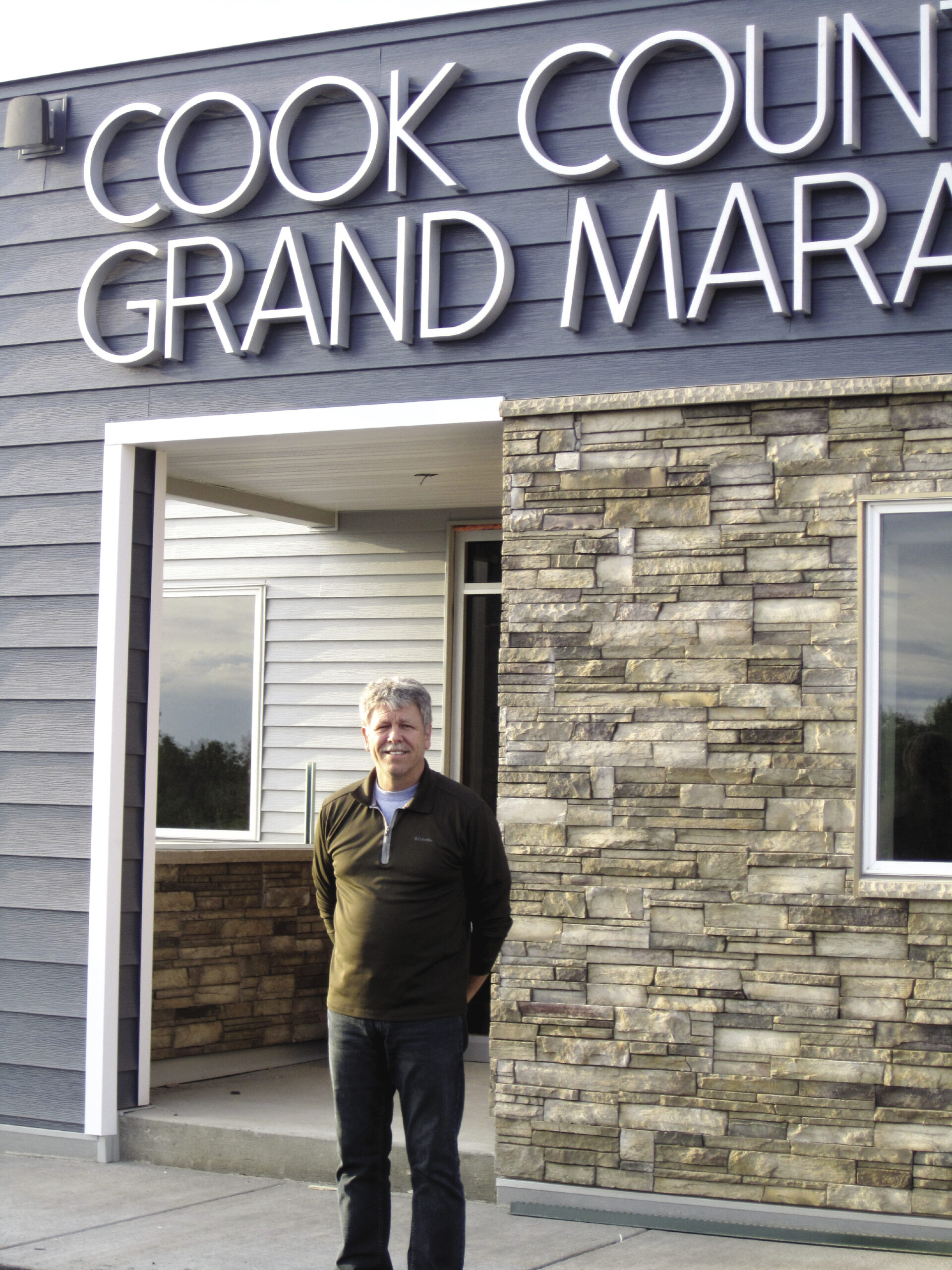Grand Marais—Gary and Jean Grover load up their dog Monty and pack the car at their home in Apple Valley for a trip up the North Shore. Instead of joining the traffic driving north, however, they head west towards Flying Cloud airport in Eden Prairie. They open the door to their rented hangar and wheel out their 1969 Cessna 172 single-engine plane. Jean loads up Monty and their gear, while Gary—a private pilot for 40 years—“pre-flights” the plane. They jump in, call ground control, talk to the tower, and are cleared for takeoff. Once airborne, they head west towards Lake Minnetonka to clear Minneapolis airspace, then veer north towards Duluth. Lake Superior comes into view an hour later, and they turn northeast and follow the shoreline, passing over their house in Lutsen before turning north and circling Devil’s Track Lake towards the recently expanded runway of the Cook County/Grand Marais Airport.
The original airport was located in Grand Marais on the site of the present-day Cook County schools. Built in 1933, it was funded by a Depression-era federal employment program. But proximity to town, nearby topography, erratic winds, and a host of other problems plagued the site.
“It didn’t take long to realize it was a poor choice,” said airport manager Rodney Roy.
In 1947, former World War II pilot Clarence Krotz opened Skyport Lodge and Airport on Devil’s Track Lake. Krotz provided flying lessons and also access into the area now known as the Boundary Waters Canoe Area Wilderness. Eventually, the airport was scooped up by the county and replaced the earlier site. But over time, Devil’s Track became a popular summer getaway, and nearby cabins and private property limited any runway expansion. So in 1996, the county’s airport commission moved the airport to its current site, ¾-mile north of the old runway, and hired Roy to manage it soon after.
On a late July afternoon, a construction crew works on the exterior of the arrivals/departures building at the airport. Roy is inside a nearby hangar, performing maintenance on a client’s plane. His desk sits just inside the door—a temporary office until the crew finishes their work. In addition to his county position as airport manager—which includes maintenance, plowing, fueling planes, and staffing the office—Roy is a certified technician and rents a hangar for his own business: Roy Aero Service. He’s well-known for his restoration work, and is currently working on a 1950 Cessna, the first plane used by the National Oceanic and Atmospheric Administration (NOAA).
The airport consists of an arrivals/departures building and office, county-owned tee hangars, a garage for maintenance equipment, a row of small, privately owned hangars, and—of course—a runway. There are 14 private planes based in Cook County, including Sawtooth Aviation, a business that does aerial tours of the region; the other aircraft are recreational and owned by area residents. Designated as a “general aviation” airport, Cook County offers no scheduled commercial flights, in part due to the security mandated for airline-served airports by the Federal Aviation Administration (FAA). But any private plane or corporate jet can use the airport whenever needed.
“It’s a tourism airport…We’re no different than Highway 61. We’re just another venue to get people up here,” said Roy.
Roy and the county airport commission spent years petitioning the FAA for $5.4 million dollars to expand the runway. The existing runway was only 4,200 feet and therefore shy in both width and length of the 5,000 foot minimum for larger aircraft, such as the firebombers used to fight area wildfires. For that reason, during the Ham Lake fire of 2007, aircraft had to fly from the Ely airport instead of Grand Marais.
“Both the FAA and [the Minnesota Department of Transportation] are investing in your community. They don’t take that lightly. You have to prove to them that you’ll back it up once they do…the justification was primarily fire safety,” said Roy.
In addition to the runway expansion, the second phase of the project included a $740,000 remodel of the arrivals/departures building. The space includes a large lounge area/waiting room, bathroom facilities, a kitchenette, an office and a conference room.
“It’s an asset for the community…It’s designed to be available,” said Roy.
New expansions to the runway will provide for transport in emergency situations, including wildfires and medical evacuations. Improvements to the existing public spaces will benefit all who use the facility, including community members looking for a place to meet.
To celebrate the grand opening, a pancake breakfast is scheduled for September 23 from 8-11 a.m. The public is welcome to attend.
Meanwhile, Gary and Jean land their Cessna on the new runway and taxi to their rented hangar. They unload from their plane into an old Ford Ranger, pass by the construction site at the arrivals/departures building, and drive home to Lutsen.—Matt Nesheim




